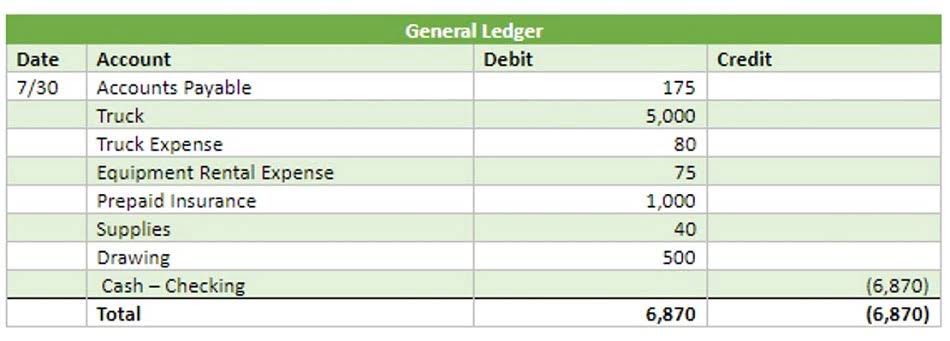
The term current refers to short-term assets or liabilities that are consumed (assets) and paid off (liabilities) is less than one year. The current ratio is used to provide a company’s ability to pay back its liabilities (debt and accounts payable) with its assets (cash, marketable securities, inventory, and accounts receivable). Of course, industry standards vary, but a company should ideally have a ratio greater than 1, meaning they have more current assets to current liabilities. However, it’s important to compare ratios to similar companies within the same industry for an accurate comparison. Analysts and creditors often use the current ratio, which measures a company’s ability to pay its short-term financial debts or obligations.
- Although the current and quick ratios show how well a company converts its current assets to pay current liabilities, it’s critical to compare the ratios to companies within the same industry.
- If it is a short-term investment, such as a money market fund, then it would be classified as a current asset.
- Current assets are more short-term assets that can be converted into cash within one year from the balance sheet date.
- The presence of substantial leased fixed assets (not
shown on the balance sheet) may deceptively lower this ratio.
Your other fixed assets that lack physical
substance are referred to as intangible assets and consist of valuable rights,
privileges or advantages. Although your intangibles lack physical substance,
they still hold value for your company. Sometimes the rights, privileges and
advantages of your business are worth more than all other assets combined. These
valuable assets include items such as patents, franchises, organization expenses
and goodwill expenses. These investments are temporary and
are made from excess funds that you do not immediately need to conduct operations.
Finance Day-to-Day Operations
All too often, people are short on cash and have too much wealth tied up in illiquid investments such as real estate. Illiquid is just a fancy way of saying that you don’t have the immediate cash to meet a pressing need. To serve this purpose, assets and liabilities are recorded on the balance sheet in a specific order. This order of assets and liabilities on the balance sheet is called marshalling. The arrangement of assets and liabilities on the balance sheet in a particular order is called marshalling.
[IAS 1.88] Some IFRSs require or permit that some components to be excluded from profit or loss and instead to be included in other comprehensive income. That information, along with other information in the notes, assists users of financial statements in predicting the entity’s future cash flows and, in particular, their timing and certainty. If a business makes sales by offering longer credit terms to its customers, some of its receivables may not be included in the Current Assets account. These liquid stocks are usually identifiable by their daily volume, which can be in the millions or even hundreds of millions of shares. When a stock has high volume, it means that there are a large number of buyers and sellers in the market, which makes it easier for investors to buy or sell the stock without significantly affecting its price. On the other hand, low-volume stocks may be harder to buy or sell, as there may be fewer market participants and therefore less liquidity.
Is Notes Receivable A Current Asset? How It Is Treated In Accounting
A deferred expense or prepayment, prepaid expense, plural often prepaids, is an asset representing cash paid out to a counterpart for goods or services to be received in a later accounting period. Insurance companies generate their revenues primarily from underwriting insurance premiums. When an individual buys an insurance policy, order of liquidity of current assets they pay the premium to the insurance company. The primary liabilities of insurance companies are the claims they have to pay out on insurance policies, for example, when a customer gets into an automobile accident. It excludes noncurrent assets such as property, plant, and equipment, intangible assets, and goodwill.
It also covers all other forms of currency that can be easily withdrawn and turned into physical cash. The most liquid stocks tend to be those with a great deal of interest from various market actors and a lot of daily transaction volume. Such stocks will also attract a larger number of market makers who maintain a tighter two-sided market. For example, if a person wants a $1,000 refrigerator, cash is the asset that can most easily be used to obtain it.
What is a Liquid Asset?
Reuters, the news and media division of Thomson Reuters, is the world’s largest multimedia news provider, reaching billions of people worldwide every day. Reuters provides business, financial, national and international news to professionals via desktop terminals, the world’s media organizations, industry events and directly to consumers. Stablecoins backed by an asset such as https://www.bookstime.com/ gold, would only have to offer redemptions at the going market price for the asset at the time of redemption. The EBA launched public consultations on liquidity requirements for the reserve of assets that back a stablecoin, meaning that only eligible assets of high enough quality can be used. Notably, but perhaps not surprisingly, this increase is led by institutional capital.
